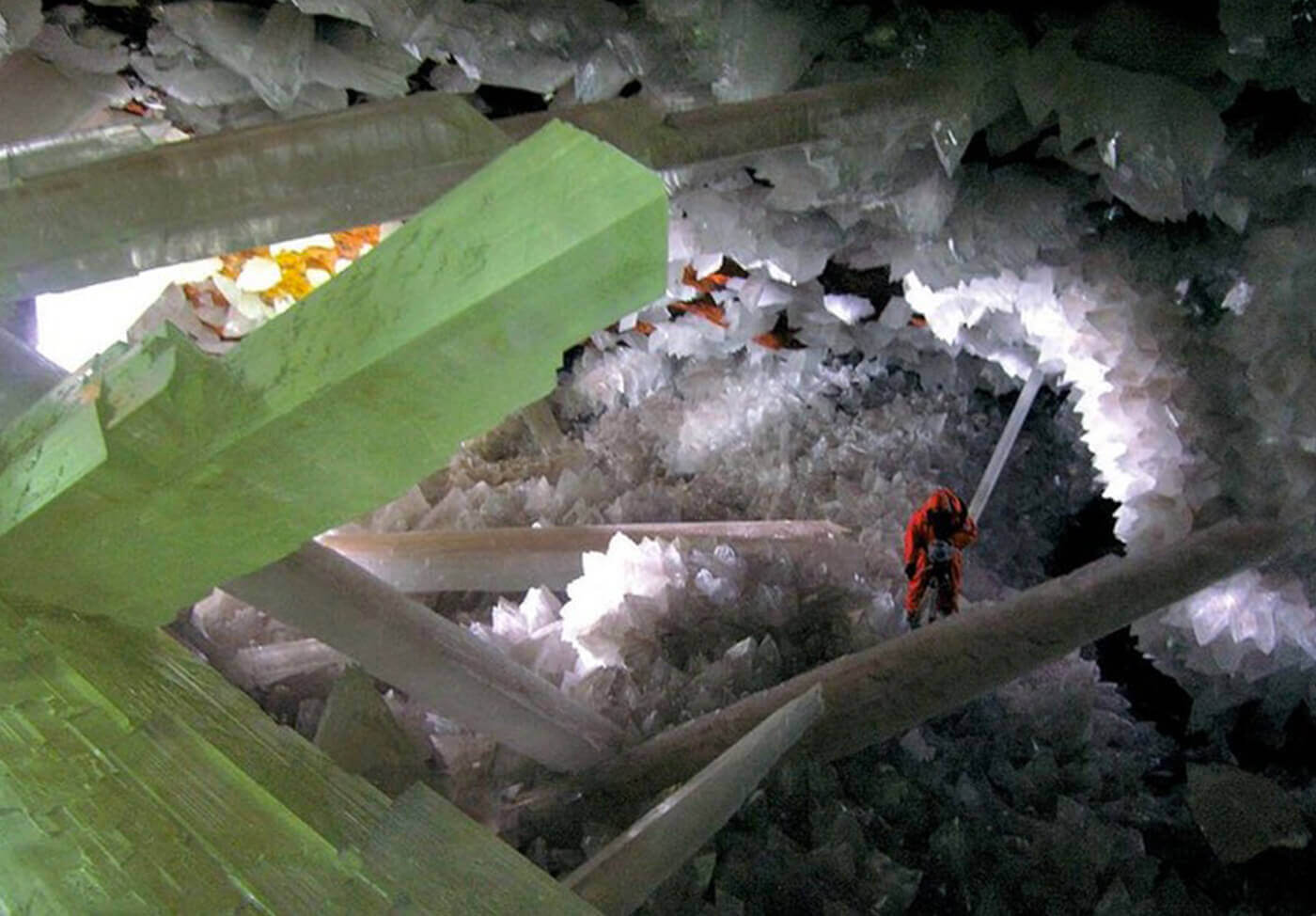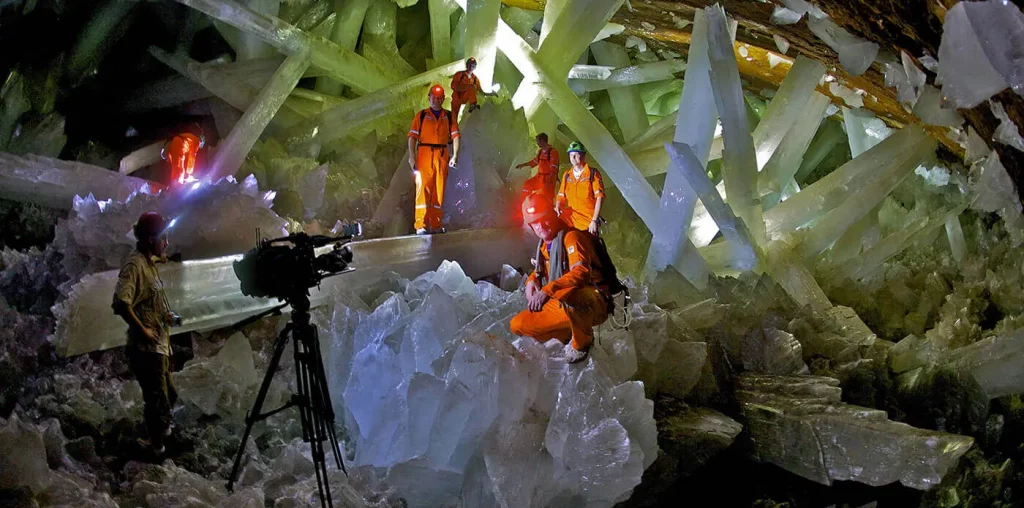The Cueva do los Cristales or Giant Crystal Cave is located in Mexico near the town of Naica, Chihuahua, and is a cave known for the presence of huge selenite crystals. This unique site, which has become an object of interest to researchers, geologists, mineralogists and simply enthusiasts, is located deep in the Mexican desert of Chihuahua, close to the border with the United States of America.
The uniqueness of the cave lies in the presence of huge prismatic crystals - some of the largest crystals - up to 11 m high, which cover the walls of the cavity. They are formed from selenite, a special kind of gypsum (hydrated calcium sulphate of the composition CaSO4-2 H2O) of a greyish colour, sometimes transparent, which, with some imagination, can remind one of the colour of the moon: not for nothing is it called the "moon stone" or lapis specularis.

The crystal caves of the Naica mine and their secrets
The crystal caverns of the Naica mine, store the largest crystal formations ever found on Earth, some weighing up to 55 tonnes. They can reach 15 metres in length and 2 metres in diameter and are stored in an extreme environment, where temperatures range from 48 to 60° C and humidity is almost 100%. A hellish place where humans can only survive for a few minutes. Scientists carrying out research work inside the cavity have to wear special 'air-conditioned' suits, fitted with respirators very similar to those used in space.
The site was originally known for its deposits of silver, zinc and lead, on which the mine, the Naica mine, was built, but discoveries soon led to it becoming one of the world's most famous mineralogical sites. Indeed, in the vicinity of the mine, the subsoil is divided into several cavities that conceal a number of gypsum deposits.
The first discovery dates back to 1910 when the "Cueva de las Espadas" (Cave of Swords) was discovered, which is about 120 m deep and contains selenite crystals more than 2 m long. Excavations continued until 2000 when a second, larger chamber, called Cueva do los Cristales, was discovered at a depth of about 300 metres and contains even larger selenite crystals. In order to preserve the beauty contained therein, access was restricted to a group of researchers appointed to carry out some geological, mineralogical and biological analyses (to check the presence of life forms).
For many years the Naica cave was considered a scientific enigma, until Juan Manuel Garcia-Ruiz, a scientist from the University of Granada, unravelled its origins. According to the scientist's calculations, these structures were formed due to a very long period of time during which, the material crystallised, and in an article in the journal Proceedings of the National Academy of Sciences, he said: "The growth is so slow that until now it was almost impossible to measure it. We have succeeded in this research because we have developed a microscope together with Sendai University (Japan). This device has allowed us to estimate that some crystals have grown in about one million years."

How did the crystals in the Naica mine caves come about?
The formation of gypsum crystals probably began 26 million years ago when hydrothermal activity in Mt Naica created cavities filled with anhydrite, a mineral chemically similar to gypsum but without water and stable at temperatures above 58°C. When the magma chamber cooled, the temperature in the depths dropped below 58°C and the water in the caves was able to dissolve the anhydrite and enrich it with sulphate and calcium ions. Over millions of years, sulphate and calcium precipitated, resulting in the huge selenite crystals that we can admire today.
The size of the minerals is related to the constant temperature at the time of their formation: the lack of temperature changes contributed to the extremely abundant growth; on the contrary, if the temperature decreased rapidly, smaller crystals would have formed. As temperatures tend to rise with depth, the presence of other hidden, even deeper caves with even larger crystals than those found so far cannot be ruled out.
Today, experts only have to visit the cave during water pumping by the mining company that is draining the mine. In 2015, work stopped, allowing water to re-fill the cavity and bring the crystals back under water. A recent study conducted in 2020 found that the most significant anthropogenic damage to the crystals was caused by water extraction from the caves.
Is there life, in the caverns of the Naica mine?
Recent research led by Penelope Boston, head of NASA's Astrobiology Institute and presented at the annual meeting of the American Association for the Advancement of Science, has also uncovered some microbes. These are special bacteria that thrive on iron, sulphur and other chemicals, capable of living in extreme environmental conditions, bacterial life forms that have been trapped inside these giant crystals for at least 50,000 years. An incredible discovery that makes us wonder about the ability of life to adapt to the harshest environmental conditions. Naica Crystals Cave is certainly not a tourist destination, but its beauty, still shrouded in mystery, can make us realise how many hidden places we still have to explore to understand the fullness and infinite perfection of, our world.


 and then
and then 
